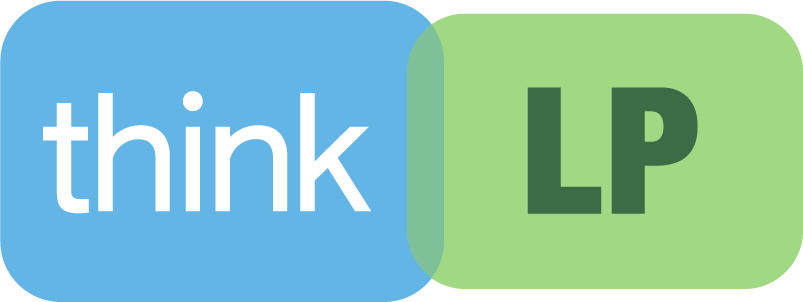To explore how businesses can effectively establish a loss prevention culture, we sat down with Tony Sheppard. With over 30 years of experience and a notable focus on Organized Retail Crime (ORC), Tony is a leading voice in the field. His insights offer a practical roadmap for businesses eager to safeguard their assets and strengthen operational integrity.
How to Set Up a Successful Loss Prevention/Asset Protection Data Strategy
Creating a loss prevention culture requires a thoughtful, strategic approach. Here are four key steps to establish a cohesive and proactive loss prevention framework:
1. Define Your Mission and Scope
The first step in fostering an effective loss prevention culture is clarifying its focus, goals, and priorities. This involves defining the specific responsibilities that your company’s loss prevention efforts will address. Are you aiming to tackle internal and external theft, or should your strategy also cover broader areas like waste management, operational inefficiencies, and workplace safety?
It’s equally important to determine how the success of your loss prevention culture will be measured. Beyond traditional metrics like shrink reduction, consider tracking waste, gross margin, accident frequency rate (AFR), safety compliance, and other indicators that align with your business priorities.
Establishing these foundational elements helps shape the structure of your loss prevention efforts across leadership, field management, and store-level teams. For businesses without dedicated loss prevention departments, clear processes for budgeting and resource allocation are crucial to ensure alignment with company objectives and maximizing impact.
2. Assemble a Dynamic Team
A successful loss prevention culture thrives on a team with diverse skill sets. “You need a mix of traditional loss prevention skills and operational know-how to effectively combat evolving tactics in organized retail crime and other complex loss events,” Tony advises. This includes having team members skilled in investigations and others with deep knowledge of business operations.
Building a robust loss prevention culture is about more than preventing theft; it’s about understanding how every facet of your business influences loss. A diverse team ensures you’re equipped to tackle challenges from multiple angles.
3. Foster a Unified Loss Prevention Environment
Building a true loss prevention culture requires teamwork and collaboration. Tony emphasized, “Strong interdepartmental relationships and clear policies are key to effective decision-making.” These policies are essential for mitigating risk, as they provide employees with a framework to minimize errors, ensure proper data handling, and enforce compliance.
This approach aligns with the “First Team” concept, where loss prevention leaders prioritize company-wide goals over department-specific objectives. By collaborating with sales, operations, and other teams, loss prevention becomes seamlessly integrated into the business culture.
For example, loss prevention and Operations teams can work together to review sales and theft data on high-risk items. Instead of locking up products, they might implement alternative solutions like single-item displays to deter theft while maintaining accessibility. Involving cross-functional teams ensures a balanced approach that supports both customer experience and profit protection.
4. Leverage Technology for Scalable Growth
Investing in technology can significantly strengthen your loss prevention culture. While the upfront costs may seem high, tools like incident management software and audit platforms with workflow automation can handle increased workloads without proportional increases in costs, making them ideal for scalable growth.
The Importance of a Data-Driven Strategy
A strong loss prevention culture starts with a thoughtful data strategy. Before investing in tools and systems, clarify your goals and identify which data points align with them. As Tony explains, “You need to be clear on your main goals, so you can focus on capturing the data that aligns with them.”
Assessing visible and hidden data points within your budget helps prioritize impactful data sources. Shifting from traditional audits to modern methods like digital surveys and checklists improves accuracy and visibility while optimizing resources.
Key Performance Indicators (KPIs) and the Role of a Core Platform
Once you have identified accessible data points, the next critical step is establishing meaningful Key Performance Indicators (KPIs) to track the success of your loss prevention culture. Metrics like known losses, safety incidents, audit outcomes, compliance rates, and operational efficiencies are essential for measuring effectiveness. By weighing both visible and hidden data points against your primary loss prevention goals, you can set relevant short-term KPIs while building a roadmap for achieving longer-term objectives.
To effectively measure and manage these KPIs, a centralized core platform becomes invaluable. A system like ThinkLP’s platform simplifies how businesses document incidents, streamline audits, and analyze patterns, providing a comprehensive view of progress. Tony explained, “A robust platform helps you move from foundational KPIs to long-term strategic goals by aligning data insights with actionable steps.”
ThinkLP’s platform enables businesses to gather, manage, and assess data efficiently, ensuring that every aspect of your loss prevention culture is supported by real-time insights. By integrating data from incidents, audits, and point-of-sale systems into a unified view, businesses can quantify progress, refine strategies, and maintain alignment with company objectives. This approach not only fosters scalability but also provides clarity on how each initiative contributes to reducing risk and enhancing profitability.
What to do Next?
Integrating the right tools is essential for building an impactful loss prevention culture, especially in absence of a large department, but it all starts with clear goals and collaboration. As Tony Sheppard emphasized, creating a unified loss prevention strategy requires buy-in from leadership and cross-departmental teams. You’ll need this collaborative support not only for aligning priorities but also for rolling out the policies and procedures necessary to mitigate risks effectively.
With limited employees typically dedicated to loss protection, gaining the support of the leaders from other departments is critical to enforcing compliance and embedding loss prevention into the company’s broader culture.
Once these objectives are defined, a platform like ThinkLP’s Loss and Safety Intelligence Platform can solidify your efforts by centralizing data, streamlining incident reporting, and ensuring compliance. ThinkLP’s platform helps reinforce alignment with company goals, ensuring that every action and outcome contributes meaningfully to your overall objectives.
Centralized Data Management
ThinkLP consolidates all incident, audit, location, and point of sale data into a unified view for streamlined management.
Efficient Incident Reporting
ThinkLP simplifies case management, investigations, and law enforcement interactions, ensuring every detail is tracked efficiently.
Auditing and Regulatory Compliance
ThinkLP’s integrated audit software allows for remote audits, self-assessments, and corrective action tracking, helping businesses stay ahead of regulatory requirements.
Proactive and Actionable Analytics
By identifying patterns and anomalies, ThinkLP supports proactive decision-making that enhances your loss prevention culture’s effectiveness.
“ThinkLP is about having everything you do in one place, making it easier to manage and use insights,” Tony explained during our discussion. His practical experience with the platform demonstrates how it can foster a cohesive, results-driven loss prevention culture that aligns seamlessly with business goals.
Ready to Build Your Loss Prevention Culture?
Request a demo of ThinkLP’s platform today and discover how our tools can streamline your operations, centralize your data, and support your team in achieving its goals.


